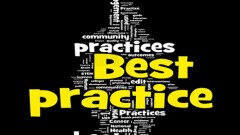Want unlimited access to top ideas and insights?
In a previous column I mentioned that I could rattle off 30 essential areas of managing a practice, and a few people emailed me to know what they are. I previously posted such a list and decided that it was time to update it, so here are the 30 I was referring to.
Managing a practice is a separate business by itself and needs the care and attention you give to the professional services part of your practice. Imagine an office (yeah, imagine an office, well, someday we’ll be back in the office) without staples or paper clips. Right now we are working from home. Think back to the early days when you had to stock up on paper, toner and maybe a better chair and a lamp. These are things we take for granted, but someone has to do it. Anyway, everything is important, but some things are more important than others. Here is a list of essential areas that need to be managed to make your practice run well. They’re the most critical issues in running a CPA firm. Obviously some are more important than others, but they are all important and need to be considered.






